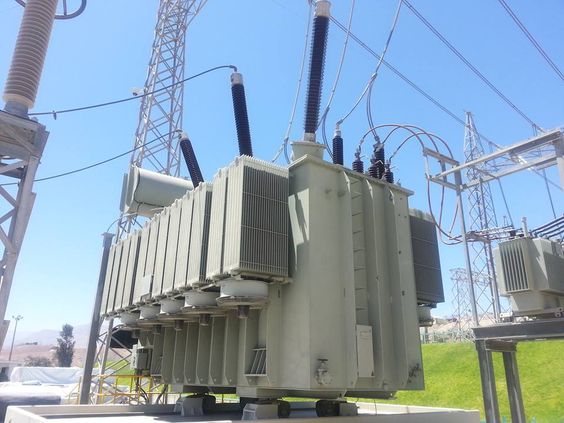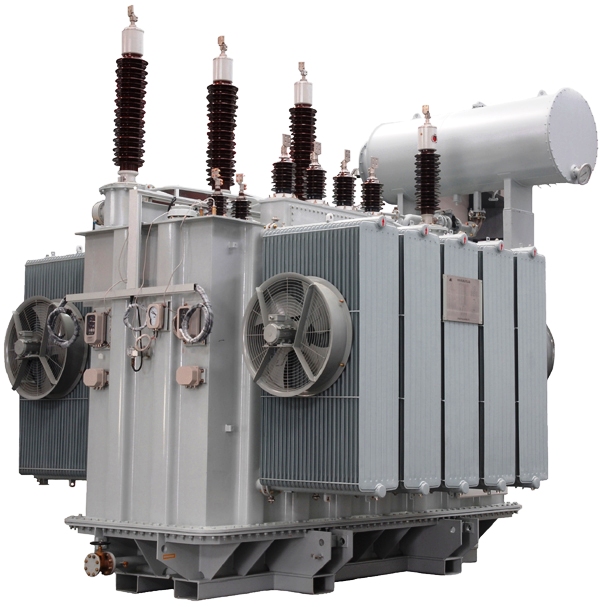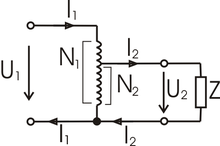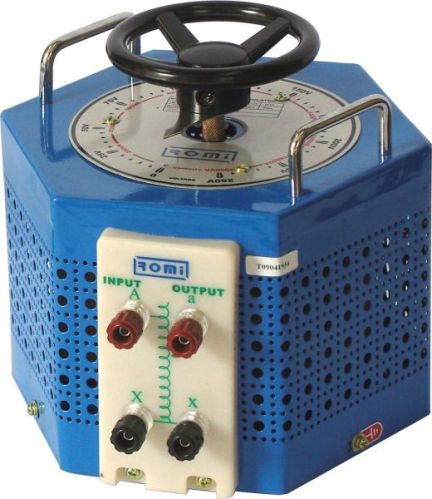Categories: Featured Articles » Novice electricians
Number of views: 1494
Comments on the article: 0
Transformers and autotransformers - what is the difference and feature
Various electrical equipment and modern electrical networks as a whole use primarily AC for their work. Alternating current feeds engines, induction furnaces, machine tools, computers, heaters, electric heaters, lighting devices, household appliances.
It is impossible to overestimate the importance of alternating current for the modern world. However, high voltage is used to transmit electrical energy over long distances. And the technique requires low voltage for its power supply - 110, 220 or 380 volts.
Therefore, after transmitting to a distance, the voltage must be reduced. Lowering is carried out in steps using transformers and autotransformers.

In general, transformers are up and down. Step-up transformers are installed in generating power plants, where they increase the alternating voltage received from the generator to hundreds of thousands and even a million volts, which are suitable for transmission over long distances with minimal energy loss. And then this high voltage is reduced again with the help of transformers.

A conventional power or network transformer is an electromagnetic unit whose purpose is to change the effective value of the alternating voltage supplied to its primary winding. The canonical transformer has several windings, but at least two - primary and secondary.
The turns of all the transformer windings encircle a common magnetic core - core. A voltage is applied to the primary winding, the value of which must be changed, a consumer or a network with sockets, from which numerous consumers will be powered, is connected to the secondary (secondary) winding (windings).
More information about the device transformer see here:How is the transformer arranged and working, what characteristics are taken into account during operation
The operation of the transformer is based on the law of electromagnetic Faraday induction. When an alternating current flows through the turns of the primary winding, an alternating electromagnetic field of a given current acts in the space inside the (mainly) winding.
This alternating magnetic field is capable of inducing EMF induction in the secondary winding, which covers the space of action of the magnetic flux of the primary winding. In a conventional transformer, the primary windings are galvanically isolated from the primary.
In an autotransformer, part of the turns of the primary winding is used as a secondary one. It is advisable to use autotransformers when the voltage needs to be reduced only slightly, not at times, as conventional transformers do, but for example 0.7 times.

Thus, the main difference between a transformer and an autotransformer is that in a conventional transformer, the windings are electrically isolated from each other, and the autotransformer windings have common turns and therefore are always galvanically connected. With a transformer, each winding has at least two own terminals; with an autotransformer, one terminal will always be common to the primary and secondary windings.

Autotransformers are widely used in networks with voltages of more than 100 kV, since with stepwise voltage reduction, when it is clear that the windings of the final transformer will be galvanically isolated, the absence of galvanic isolation at the autotransformer stage is not critical.
But from an economic point of view, autotransformers are much more profitable than ordinary ones. They have less loss in the windings due to less copper in the wires than conventional transformers of similar power.
The size of the autotransformer at the same power is smaller - less material and core costs. Autotransformers have a higher efficiency, because only a part of the magnetic flux is subjected to conversion. And in general, the cost of an autotransformer is lower.
The disadvantages of the autotransformer, in contrast to the usual one, include the lack of galvanic isolation between the primary and secondary circuits. If the insulation is broken for any reason, the low voltage winding will be under high voltage. Therefore, autotransformers are usually not used in everyday life so as not to expose the average person to the danger of electric shock.

At voltages up to 1000 volts, autotransformers are used to regulate voltage in the form of laboratory devices - laboratory autotransformers (LATRs) and as part of electromechanical voltage stabilizers (see - 220V network voltage stabilizers - comparison of various types, advantages and disadvantages)
See also at i.electricianexp.com
:
